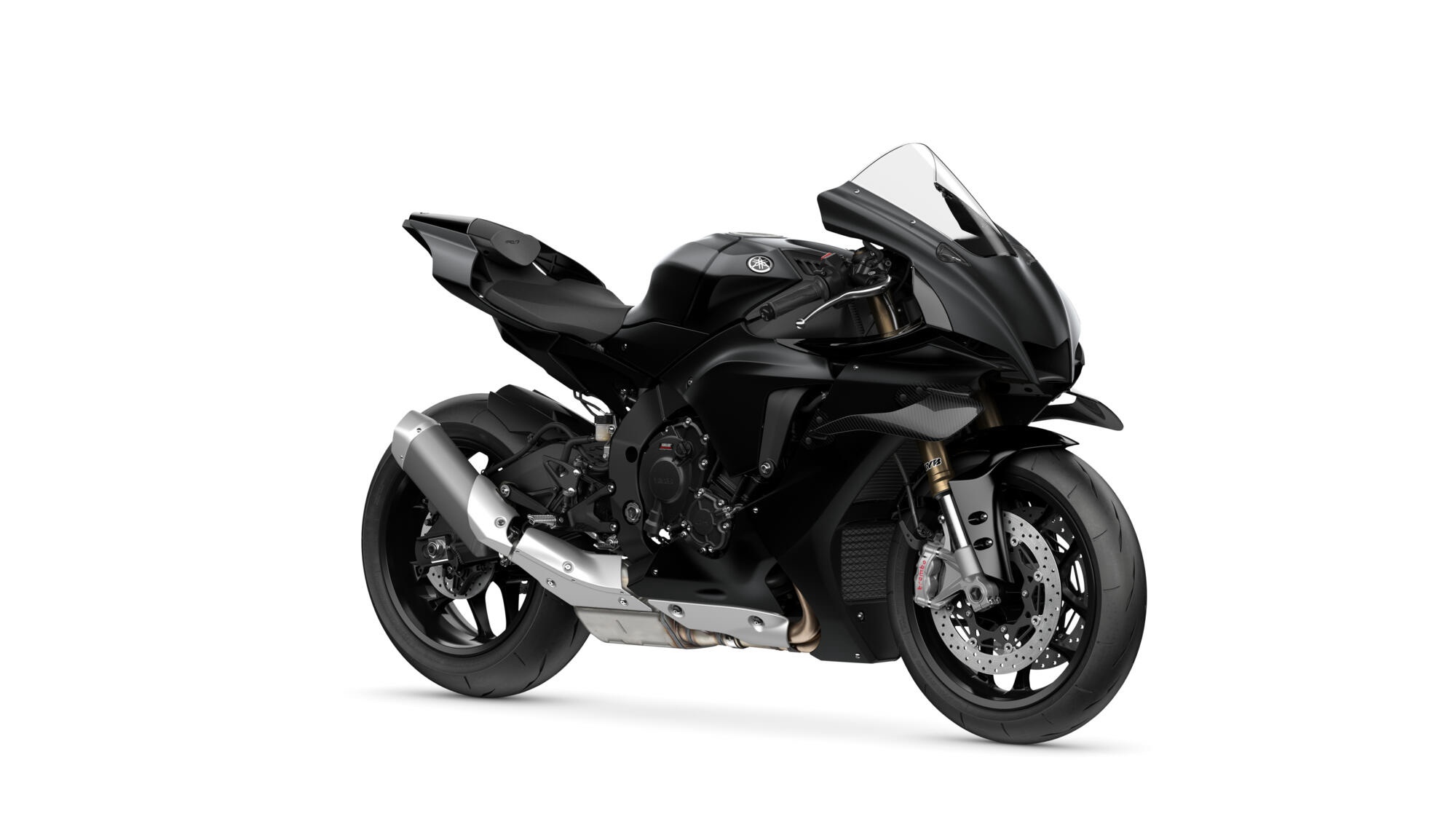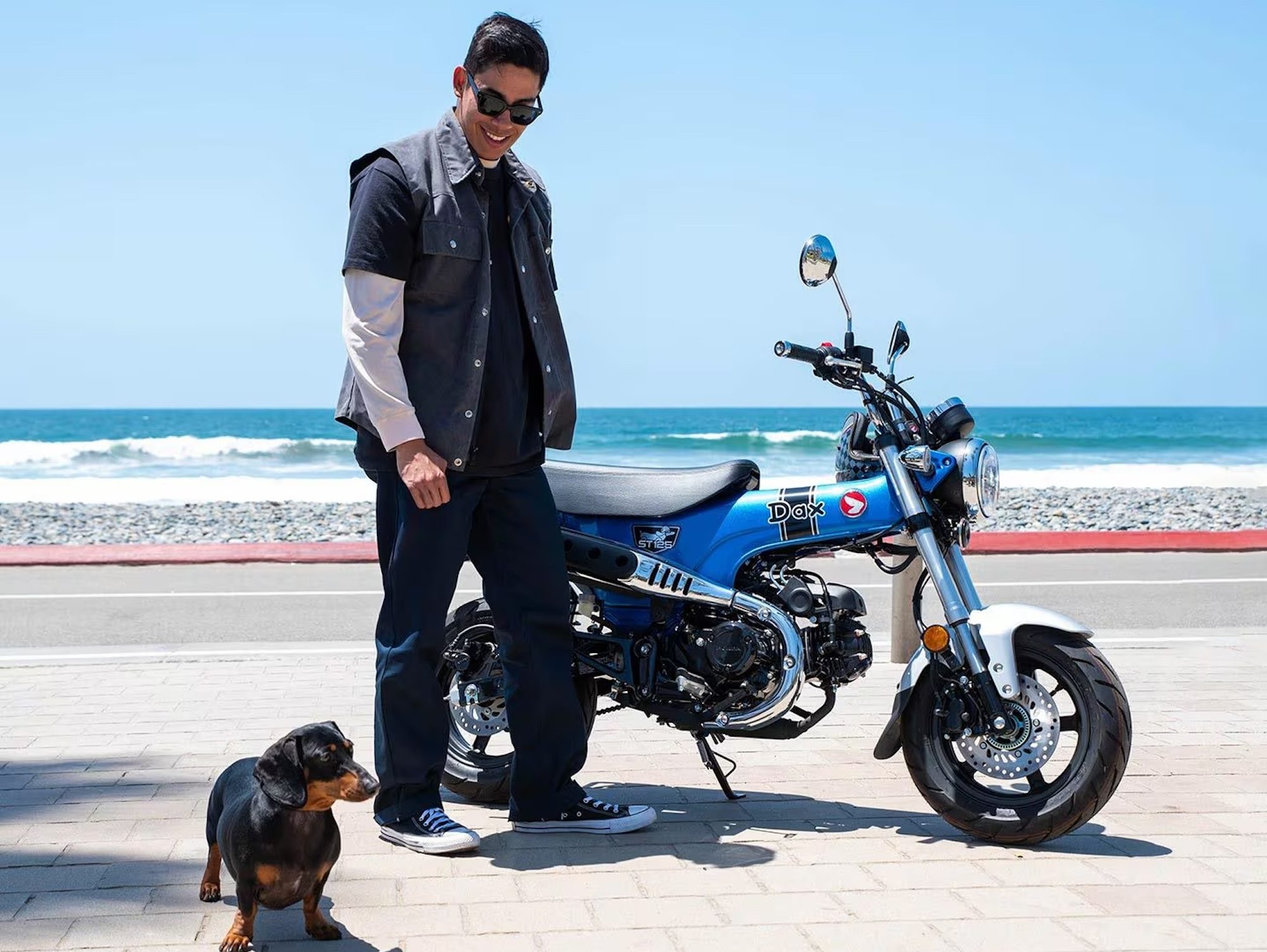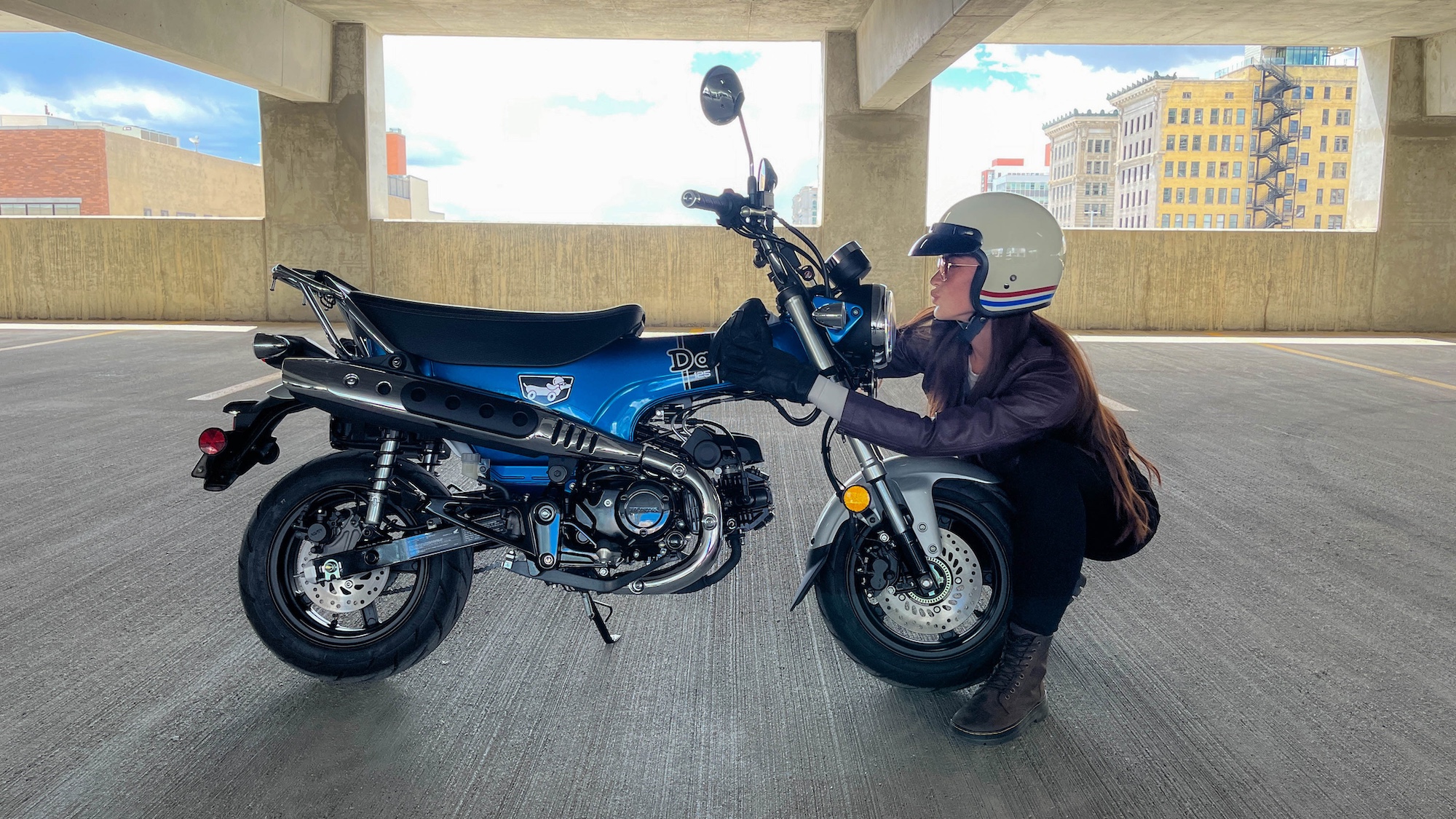Happy Crush-a Can-Friday!
We’ve got a smattering of news scattered across the industry for your weekend perusal:
- KTM’s partnered up with Bosch for an all-new radar system
- A closer look at Yamaha’s competition-level YZF-R1
- Kawasaki’s teased a Ninja 1100 with further proof that a Versys 110 is on the way
- Honda’s finally sent the Dax 125 across the pond and into the United States!
Let’s dive in and take a look at the proofs, shall we?
Bosch “World First” Radar Tech to be Housed in New KTM Super Adventure Bike


 A view of the multiple radar system perks offered with Bosch’s new radar system, which will be implemented in a new Super Adventure model. Media provided by Bosch.
A view of the multiple radar system perks offered with Bosch’s new radar system, which will be implemented in a new Super Adventure model. Media provided by Bosch.Six New Technologies, Five World Firsts… and Four Installed into a New KTM Bike
KTM’s partnership with Bosch will soon be taking an impressive swivel into “world firsts” – and riders could have access to the results as soon as 2025.
According to Bosch’s official press release, these ”six new radar-based assistance systems includ[e] five world-firsts;” here they are, in the same order as the press release, with an explanation for each teach type:
- Adaptive Cruise Control – Stop and Go (ACC S&G)
- This technology allows for the traditional cruise control, with the perk that this tech keeps the bike at traffic flow, even bringing the motorcycle to a standstill if necessary. Here, Bosch highlights the convenience of Adaptive Cruise Control in a traffic jam setting.
- Group Ride Assist (GRA)
- Applied to any group setting, this technology allows a rider’s bike to measure the distance to the bikes at the front, regulating distance for maintained, even spacing.
- Riding Distance Assist (RDA)
- This technology works very similarly to ACC, with the following exception: “With ACC, a desired speed must be set; but when RDA is activated, the motorcycle can be controlled as normal via the throttle grip.” Here, both throttle and braking can be utilized to override the technology.
- Emergency Brake Assist (EBA)
- Exactly as advertized, this technology attempts to give the rider more space pending a potential collision by “actively increase[ing] the wheel brake pressure further to reduce the bike’s speed as quickly as possible.”
- Rear Distance Warning (RDW)
- Consider this bit of technology like a passenger always keeping an eye back for rider safety. In this technology, the system keeps an eye on the vehicles behind the bike, sounding a warning if somebody gets too close.
- Rear Collision Warning (RCW)
- This system activates the hazard lights when a pending collision is imminent; while we’re still unsure what “imminent” means, we’re assuming this technology will use the same distance-measuring technologies to decide whether the rider is in a safe situation or approaching pending danger.
According to Bosch, four of the above technologies will be utilized in KTM’s new bike, with MCN adding that the bike in question is going to be a Super Adventure model – a machine that, we’re told, has already been sampled in its prototype state by MCN’s team (MCN).
The debut of KTM’s new Super Adventure is slotted for November of this year, with the production of the things slotted for sometime in 2025 (via Bosch). This is the first time, by the way, that KTM will be making use of a front radar system – and here’s how both parties are feeling about the partnership, with quotes courtesy of Bosch’s press release:
– Geoff Liersch, Head of Two-Wheeler & Powersports, Bosch (Bosch) |
– Stefan Haist, Lead Chassis Control System – Street Development, KTM (Bosch) |
For those of you worried that this tech will get in the way of your daily scoot, don’t be; according to Liersch, this technology was developed to, “push the technology topic in regards [to] safety, but… it in a way that doesn’t take away from the fun of riding.”
What do you think? Are you excited to try out the new KTM Super Adventure bike with Bosch’s new technologies?
A Closer Look at the Yamaha’s New R1 RACE



Big Features in a Big Package…but Does it Beat the New R1 GYTR?
Remember when we covered that Yamaha’s R1 was confirmed to leave the streets and return in 2025 as a track-only bike? Well, the comp-level R1 is almost here, and unlike Yamaha’s competition-level R6, the track-only R1 appears to be an amazing deal for the coming circuit’s worth of time attacks.
According to coverage from Antonio Mendes on Motorcycle Sports, pre-orders have already begun for the R1, with riders receiving their bikes starting in April of 2025.
The pre-order system for Yamaha’s new track-only R1 RACE has two stages (or batches) of ordering:
- Phase 1 – Sept 25th to Oct 9th
- Phase 2 – Oct 10th to Nov 29th
Once the bike has been delivered, riders can expect to have fun with the following features:
- A general lack of lights, mirrors, and license plate mount equating to a bike that’s lighter than the previous, road-legal R1.
- Carbon winglets for better stability on the straightaway (while also helping the brand’s anti-wheelie efforts).
- New suspension courtesy of KYB, with the front USD fork showing off independently adjustable compression and rebound on each side as well as an “improved valving system” for better handling and general performance durability.
- Brakes now show off “Stylema(R)” monobloc calipers (similar to the Monster SP) and a fresh radial master cylinder that’s lighter and optimized for airflow.
- A new, allegedly comfier and grippier saddle.
- Rider aids include Corner/Traction Control as well as controls for Slide, Lift, Brake, and Launch, three modes of engine brake management, and Yamaha’s quick-shift system. All are connected to the bike’s Power Modes.
- A single-color choice of “Matte Dark Grey.”
Beyond this, the R1 has kept its inline-four heart with unique firing intervals, as well as the aluminum Delta Box frame, magnesium subframe, and aluminum swingarm we’ve known to recognize on Yamaha’s big-bore racer.
Of course, this pleads the obligatory: What’s the difference between the GYTR R1 and this track-only, competition-level R1?
According to MOTOBOB (YoutTube), the GYTR contains all of the perks present in Yammie’s track-only R1, only the GYTR also contains a (hefty) list of special performance parts.
Add to this the adjusted ECU, more adjustable handlebars, a race seat and weight savings decisions like the carbon-reinforced fiberglass fairings, and it’s safe to say that the GYTR wins out.
In plainspeak, the R1 RACE gets you riding Yamaha’s iconic inline-four beauty, whereas the GYTR squeezes the wallet for the honor of experiencing the sporty Crème de la Crème – the tippy-top – of what Yamaha’s racing department has to offer their two-wheeled fanbase.
Would you rather try out Yamaha’s track-only R1 RACE, or the R1 GYTR?
Rumor Has It: Kawasaki’s 1100 Platform Has Grown to Two Bikes



A Ninja 1100 Tease and a Versys 1100 Confirmation
Back towards the beginning of the month, we covered Dennis Chung’s findings at Motorcycle.com of filings showing potential for an 1100 Versys. Today, we get to update y’all with the news that Kawasaki’s new 1100 platform carries the potential for not one, but two bikes.
There have been a lot of documents found by Chung, so we’ll drop his quote below to clarify which filings we’re talking about here:
– Dennis Chung, Writer, Motorcycle.com (Motorcycle.com) |
According to Chung’s findings, the original hint at a Versys 1100 – found by Chung via Australian homologation filings – now accompanies preliminary type approval information for a Ninja 1100SX, this last of which was pulled from Switzerland.
Now that we’ve got that cleared up, here’s the new stuff based on those detailed papers:
- Power for this Ninja 1100XS is rated at 134hp/100kW @ 9,000rpm; as Chung says, this is “close enough to the Australian figures to be a difference in rounding and converting between different units.”
- Torque is listed as 83.3lb-ft. @ 7,600rpm.
- Top speed is listed at 156.0 mph/251 kph.
To translate the above specs, the Ninja 1100SX’s power is lower than that of the incubating Ninja 1000SX’s figures, which show 140hp/104.5kW @ 10,000rpm. The 1100’s torque, however, beats out the 1000SX’s 81.9lb-ft. @ 8,000rpm.
As for generals, the bike height, length, wheelbase and weight are all similar to the Ninja 1000SX, though the rear sprocket ratio is larger at 2.80 and top speed beats out the Ninja1000SX by almost 2mph.
The latter might mean some transmission tweaks on the horizon, but nothing yet has been released to that note, so we’ll have to wait for updates to confirm that little tidbit.
Are you excited to see what Kawasaki has in store for us at EICMA 2025?
Honda’s Dax 125 Arrives in the US in October



Big Red’s lil’ Weiner Bike is Finally Here!
It’s 1969, and Honda’s just released a new bike.
No, it’s not running circles about the big bike competition for power or torque – rather the opposite, actually, but nobody’s complaining. It’s wickedly light, strangely long, and it’s addictive to ride.
What better machine to play the sidekick to our good moto community’s penchant for all things weird, wacky and wonderful?
Enter the Dax 125, the bike that created a cult movement thanks to its unique T-frame and tubular chassis giving it the appearance of a weiner dog, or “dachshund.” Thanks to Honda’s press release, we know the Dax 125 will be FINALLY made available in America starting in October.
Here are afew details about the Dax 125 pre-launch:
- Pricing is set at a VERY reasonable $4,199; this puts theDax 125 in the Second Place spot behind our beloved Monkey, which is currently available for $4,399 (via RevZilla).
- Engine perks remain the same as that of the Grom and the Monkey, with the usual exception that the Dax 125 doesn’t power 125cc through a conventional clutch but a four-speed semi-automatic transmission.
- Cruising speed is set at 55mph, and this is rates with a rider and a passenger. Should make for some fun memories, so be sure to have a camera handy.
- The Dax 125 will be available in two colors: “Pearl Glittering Blue,” and “Pearl Gray.”


 A view of Honda’s Dax 125. Media sourced from Honda.
A view of Honda’s Dax 125. Media sourced from Honda.Of course, those of us who haunt the north side of the border are curious: When will the Dax 125 be available in Canada?
Honda’s not completely clear on whether the Dax 125 will soon be coming to Canada, though the country’s close ties with Europe and proximal affiliation with America has me, personally, under the belief that the Dax 125 will eventually show her lanky curves to the Great White North in Ernest.
Are you excited to ride the Dax 125 on American streets?













